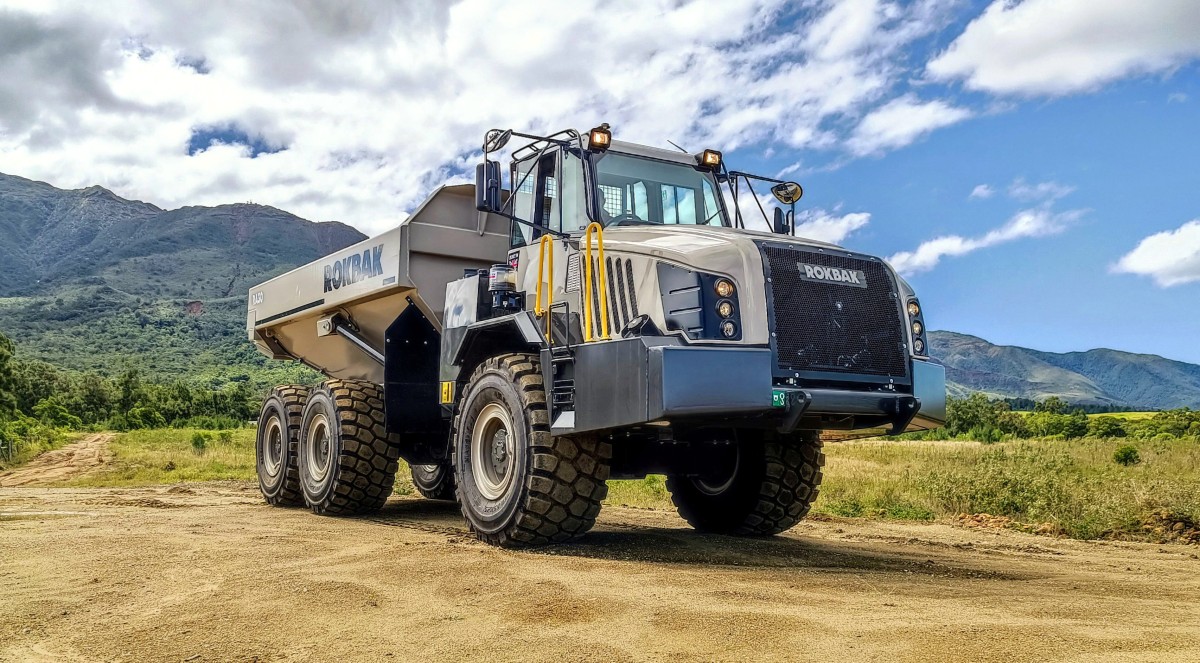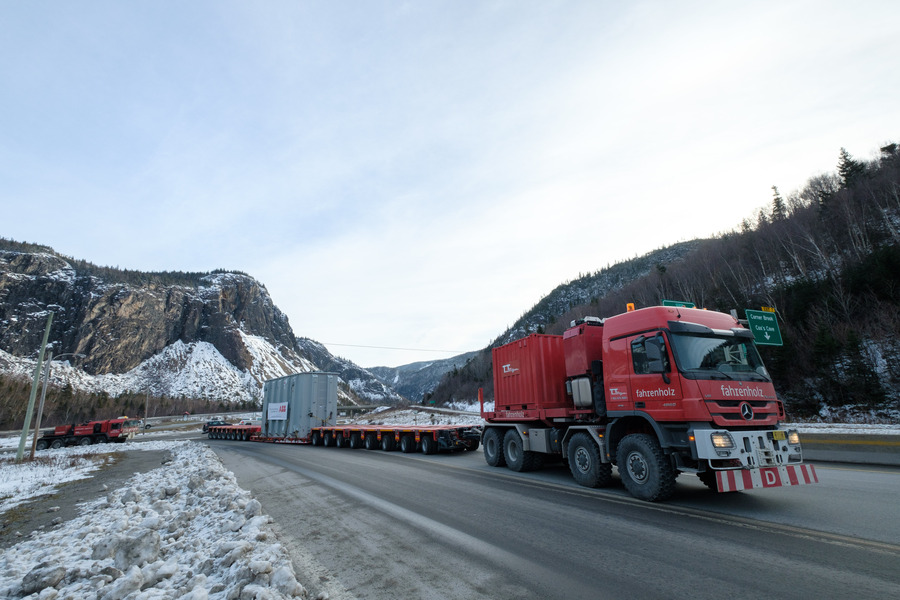Home \ International \ Hydra-Slide Equipment contributes to East Canada Mega-Project
Hydra-Slide Equipment contributes to East Canada Mega-Project
09/06/2017
Pubblicato da Redazione
Hydraulic skidding systems and other Hydra-Slide equipment supplied and operated by fellow Canadian Total Transport & Rigging Inc. (TTR), has been integral to progression of the large-scale
Hydraulic skidding systems and other Hydra-Slide equipment supplied and operated by fellow Canadian Total Transport & Rigging Inc. (TTR), has been integral to progression of the large-scale Maritime Link project that will enable the transmission of clean, renewable and reliable electricity from Newfoundland and Labrador to Nova Scotia and beyond. The 500-megawatt Maritime Link project is part of a larger strategy to address the growing demand for renewable energy. It involves building 170km of subsea high-voltage direct current (HVdc) transmission cables under the Cabot Strait, in addition to overhead transmission in Newfoundland and Labrador and Nova Scotia.
TTR has two LP400 low profile hydraulic skidding systems in its fleet, in addition to a number of jacks and a 500-ton capacity turntable. The LP400s, capable of pushing loads up to 400 tons, were recently called upon by deugro (Canada) Inc. to support the move of seven ABB Canada transformers for the Maritime Link project and set them on foundations at sites in both Nova Scotia and Newfoundland. These low profile slide systems moved four transformers (three weighing 160 tons and the other 203 tons) in Woodbine, Nova Scotia and three 160-ton units near Bottom Brook, Newfoundland. Jason Jenkins, vice president at TTR, explained that the Hydra-Slide equipment was key to final positioning of the transformers that had already traveled by ocean vessel and road.
He said: “Ensuring the integrity of the load and minimizing risk of damage to the cargo is paramount, as is the safety of all personnel involved and the public.” He added: “We even had to write to the authorities to begin the approval process to get a few kilometers of the Trans-Canada highway shut down so we could transport the units up the wrong way of the road! Once our transport vehicles had covered large distances, the LP400s were used for precise and final positioning of the heavy loads. They performed—as they always do—perfectly in each case.”
Janine Smith, vice president at Hydra-Slide, said: “The LP400’s patented low-profile, hand-portable design permits its use in most situations where a high capacity skid system is required, but where space or access is limited. A total height of less than 2 in. (51mm) reduces jacking time and is ideal for the environments presented by the Maritime Link project.”
TTR offers a variety of transportation, heavy rigging and project management services. Jenkins referenced another project where an LP400 was again used to skid a turbine weighing in excess of 150,000kg approximately 15m before it was lowered onto existing leg bolts in a cement foundation. Site personnel only had millimeters of tolerance, he added.
Jenkins said: “Our client was not only impressed at the efficiency of the Hydra-Slide System but we also saved them hundreds of thousands of dollars in unnecessary crane bills. We engineered the procedure as the client had never used a skidding system method for installations, having always used a crane.” He concluded: “We look forward to an ongoing relationship with Hydra-Slide; the support we have received from them has been second to none. From the time you arrive on site with a little box and start pulling the track out, clients are always second guessing the capabilities, but then once set-up and execution is complete they are impressed and overwhelmed at the control, strength and stability of the systems.”
The LP400 has recently been replaced by a newer model, the LP350, with similar features and a series of design improvements, most notably a graphite-steel slide surface, also utilized by Hydra-Slide’s heavy track range, replacing the ultra-high-molecular-weight polyethylene (UHMW) pads. The LP350 is capable of pushing loads up to 350 tons (310 tonnes) and represents continued evolution of the low profile range that includes the XLP150 systems.
Ultime notizie di

01/07/2021
The compact Sennebogen 613 E telescopic mobile crane proves its flexibility and safety in the mine
Südwestdeutsche Salzwerke AG welcomed a new Sennebogen 613 E...

07/11/2019
COMANSA presents its new 21LC1400 model
A new large-capacity Flat-Top crane

26/09/2017
Robbins Slurry TBM ramps up for Mumbai Metro Line 3
The first of two Slurry TBMs, a rebuilt 6.65 m (21.8 ft) dia...

23/09/2017
The world’s strongest rope for the German Zugspitzbahn
For walkers and winter visitors, there are two ways to ride...

21/09/2017
Modulift beams suspend full scale model fighter jet
Four Modulift spreader beams were used to suspend a full sca...

20/09/2017
A tunnel project with PSC Crane & Rigging
PSC Crane & Rigging, headquartered in Piqua, Ohio, supplied...
Altri International

International
23/11/2024
GPMat International takes delivery of two Raimondi T147s residential development in the South of France
- Official agent of France expands its product lineup with t...

International
22/11/2024
Sarens acquires additional SCHEUERLE SPMT K24 modules
renowned for its expertise in crane rental services, heavy l...
International
22/11/2024
Five WOLFF cranes modernize Oslo’s Ulven district
With a total of five WOLFF cranes of type 7534.16 Clear, Wol...

International
21/11/2024
Kleemann: New compact crusher used for recycling
Impact crusher MOBIREX MR 100i NEO impresses during operatio...
International
21/11/2024
SITECH partners with Royal Engineers to create poppy and demonstrate tech offering
The demostration involved creating a ground-level poppy desi...

International
20/11/2024
Strong and stable RA30 trucks carry the weight at New Caledonian mine
Three Rokbak RA30 trucks are delivering exceptional durabili...









































